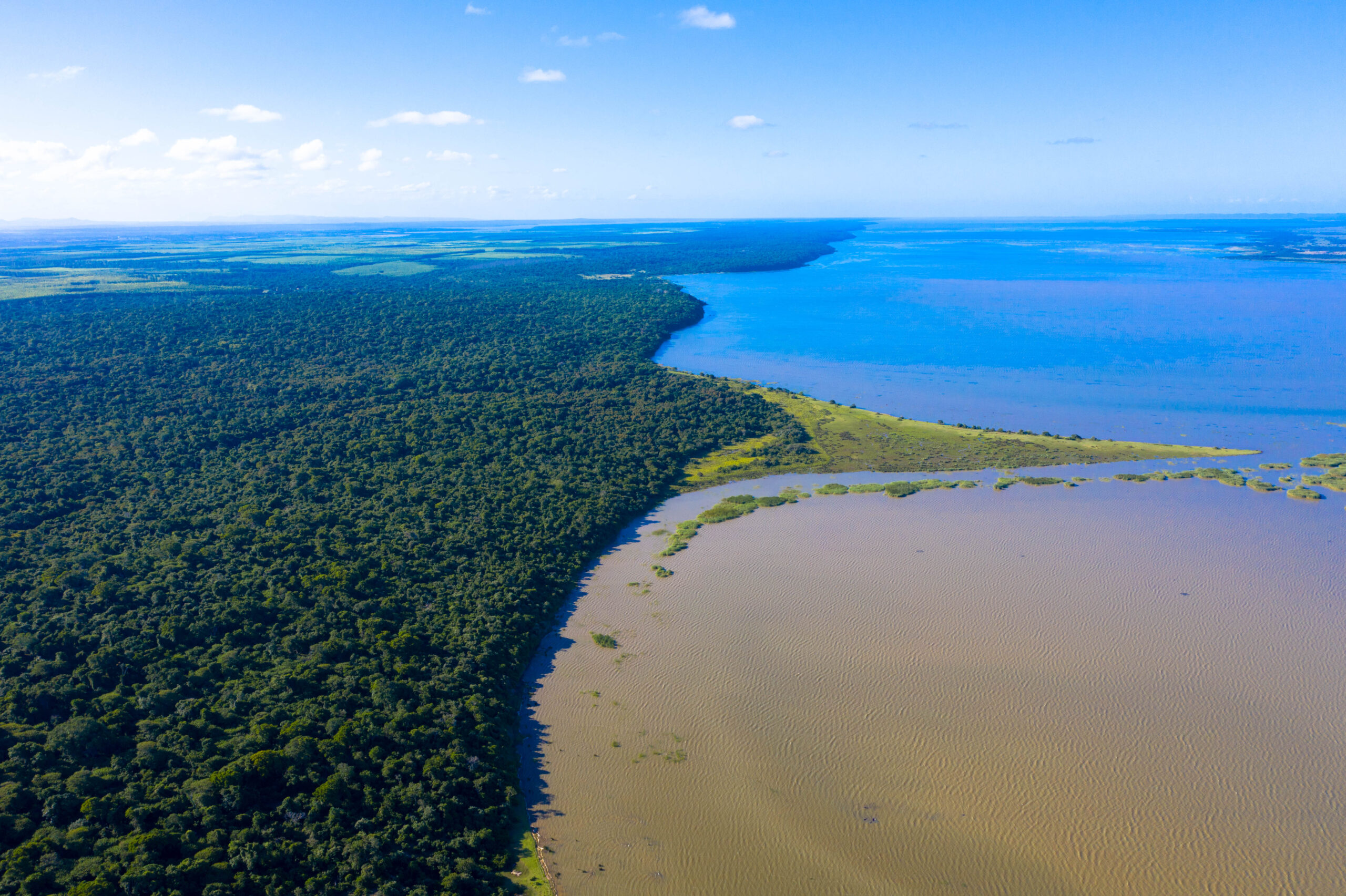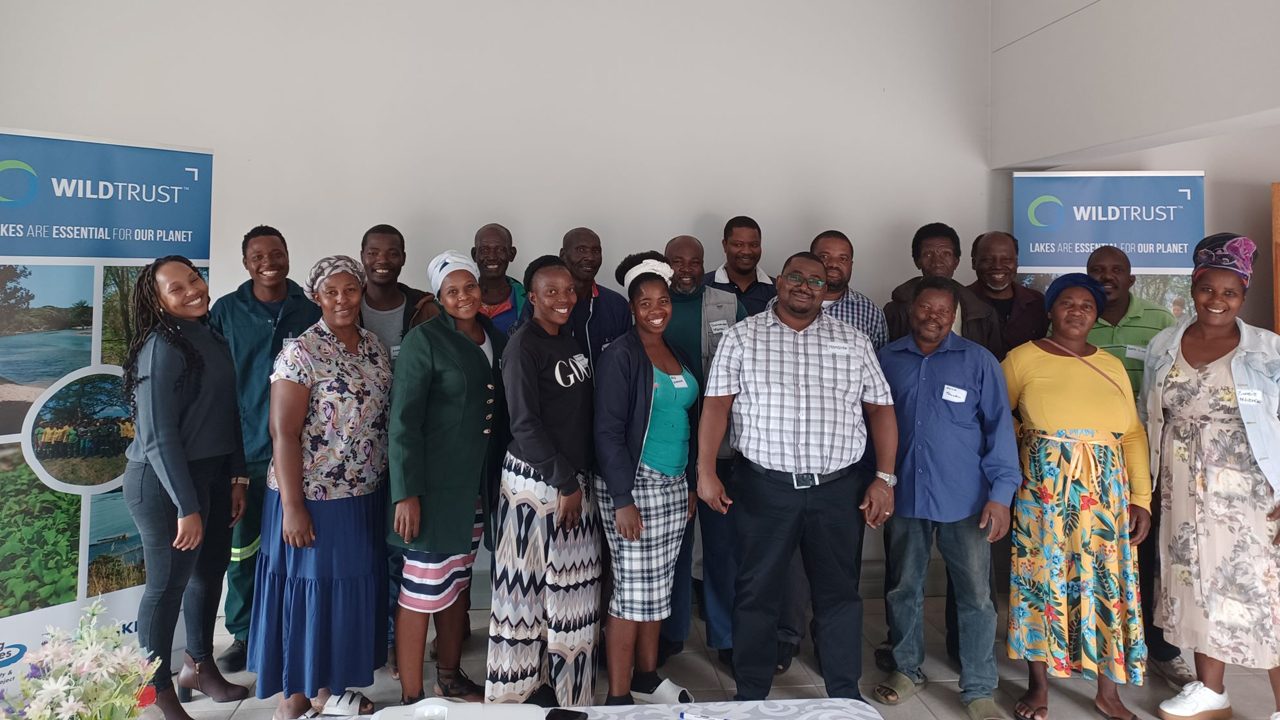In the South African province of KwaZulu-Natal, severe floods have become a clear sign of a changing climate, and rural communities are being hit the hardest. One of those communities is the KwaJobe community, where in the past two years, several local farmers have lost their farms to flood, and local ‘tree-preneurs’ – community members growing trees to support their livelihoods- have also been hit by extreme weather.
KwaJobe is similar to many other rural communities in the global south, with similar problems and livelihoods. Thanks to the rich and fertile soil in the area, the community is largely engaged in agricultural activities such as subsistence farming, fishing, and livestock farming.
But two things make KwaJobe stand out – the first, its privileged location, in iSimangaliso Wetland Park, one of the country’s largest protected areas and an outstanding natural treasure that hosts South Africa’s largest natural freshwater lake, Lake Sibaya. The other is the key role played by women in farming and in the local leadership, in comparison to the patriarchal leadership that characterizes many rural communities.
After working closely with the community for several years, the local team of WILDTRUST knows many of these women well – many of whom have been adversely affected by climate extremes such as flooding and severe droughts, and have also suffered the impacts of land degradation and invasive alien plants. KwaJobe is one of the communities situated near and around lakes where WILDTRUST is working as part of the Living Lakes Biodiversity and Climate Project.
A workshop with women and community leaders
As a mitigation strategy, in July 2023 WILDTRUST organized a two-day land-use management workshop with these women and other KwaJobe community leaders on sustainable, climate, and biodiversity-smart land-use management. In rural areas, local leaders play an integral role in land-use management. They are instrumental in ensuring that sustainable land-use strategies are implemented by the broader community.

This two-day event, the first organized as part of the Living Lakes Biodiversity and Climate Project (LLBCP), involved a theoretical training session on day one, with the community being introduced to key themes, definitions and examples of sustainable land-use management and the benefits of those practices. Day two of the workshop was a guided field trip with an environmental and agricultural specialist from WILDTRUST, demonstrating sustainable land use and climate-smart farming practices. The planned outcomes of the workshop were:
- Participants will be able to identify unsustainable land-use practices.
- Participants will be able to identify and implement sustainable land-use and farming practices.
- Participants will be able to identify the role they play within the community.
- Participants will be able to identify collaborative opportunities in land-use management.
- Participants will be able to confidently transfer the knowledge they received in the workshop to other community members.
Creating a bottom-up approach to land-use management has been an ongoing strategy over the past two decades. The land-use workshop used that approach with the community as it is important for the local community to feel a sense of ownership in these events. It is also important to ensure that local leaders feel that they are active participants in sustainable land-use management as they are the main gatekeepers in the community.
Another reason is that projects tend to yield more positive results when communities are active participants. As such, they were given an opportunity to present their views and state the role that they play in ensuring sustainable land use. Below are some of the key points mentioned by the leadership:
Key roles and responsibilities identified by the leadership:
- Ensuring knowledge transfer within the community.
- Ensuring that communities implement sustainable land-use practices.
- Coordinating and creating unity in the community.
- Listening to community members’ needs and grievances.
- Protecting the environment, including biodiversity and water.
- Allocating land to local farmers.
Key roles and responsibilities identified by the community:
- Ensuring sustainable waste management.
- Prevention of overfishing.
- Implementing sustainable farming practices.
- Creating peer-learning opportunities.

The guided field trip showed how biodiversity and climate friendly farming practices can be implemented practically in community-owned gardens. Examples of these farming practices include intercropping, crop rotation, the importance of mulching, using organic compost, agroforestry, using undesirable crops as pest control, and minimum tillage. During the field trip, participants were able to identify potential collaborative opportunities between individual farm owners. The community was able to identify the following gaps that could be addressed through the LLCBP:
- Capacity building on seed propagation.
- Identify and implement sustainable weed and pest control methods.
- IAP removal (water hyacinth). Invasive alien plants have caused an issue with water supply.
- Training on using water hyacinth to make crafts.
- Acquiring seedlings for fruit trees.
- Capacity building on market development.
- Establishing a formal structure for community farmers such as a Trust or Co-operative.
Increasing collaboration among all stakeholders
The main outcome from the workshop was collaboration. The participants were interested in collaborating with each other, WILDTRUST, the local council, and the Jozini Department of Agriculture. The participants were grateful for the workshop and the fact that the organization was able to bring them together and share ideas. The participants stated that there was a lack of a mechanism that presented opportunities for collaboration between the local farmers.
The workshop was an eye-opener for the participants because it made them realize the benefits of working together. Some benefits are cost sharing, skills and knowledge sharing, easier access to big markets as a larger crop yield will be enough to supply local supermarkets consistently and sustainably. The second workshop of the LLBCP will focus on sustainable livelihoods where the participants will be taken through the methods they can use to turn their crops into profit. Because they have knowledge on land-use management and ecosystem services, they will be taken through how they can use what they currently have, to develop sustainable livelihoods.


